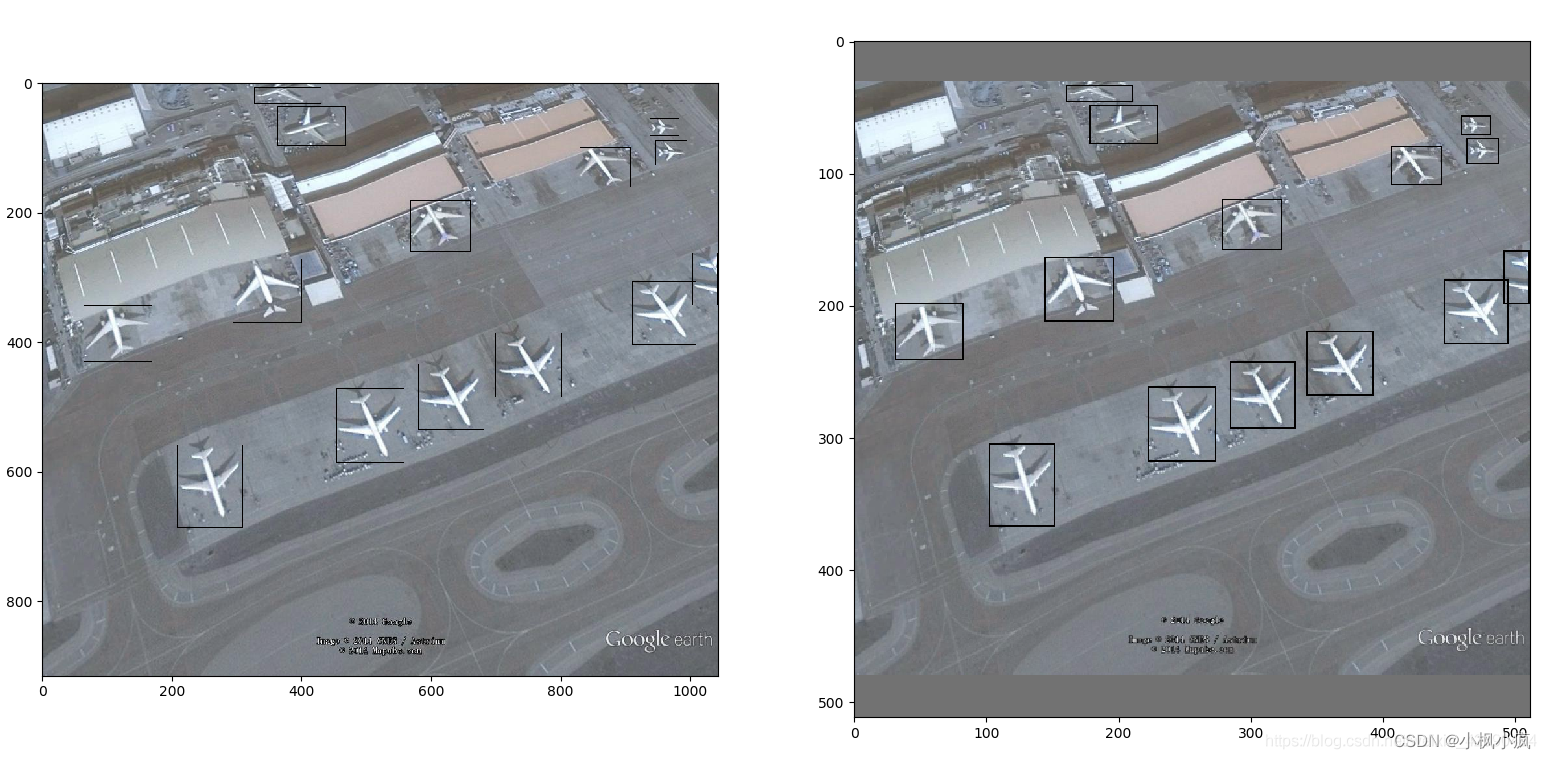foreword
The size of the input picture of the deep learning model is square, while the pictures in the data set are generally rectangular. Rough resizing will distort the picture. Using letterbox can better solve this problem. This method can keep the aspect ratio of the picture, and fill the rest with gray

import cv2
import numpy as np
import xml.etree.ElementTree as ET
class_dict = {'aircraft': 1}
def letterbox(img, new_shape=(640, 640), color=(114, 114, 114), auto=True, scaleFill=False, scaleup=True):
# Resize image to a 32-pixel-multiple rectangle https://github.com/ultralytics/yolov3/issues/232
shape = img.shape[:2] # current shape [height, width]
if isinstance(new_shape, int):
new_shape = (new_shape, new_shape)
# Scale ratio (new / old)
r = min(new_shape[0] / shape[0], new_shape[1] / shape[1])
if not scaleup: # only scale down, do not scale up (for better test mAP)
r = min(r, 1.0)
# Compute padding
ratio = r, r # width, height ratios
new_unpad = int(round(shape[1] * r)), int(round(shape[0] * r))
dw, dh = new_shape[1] - new_unpad[0], new_shape[0] - new_unpad[1] # wh padding
if auto: # minimum rectangle
dw, dh = np.mod(dw, 64), np.mod(dh, 64) # wh padding
elif scaleFill: # stretch
dw, dh = 0.0, 0.0
new_unpad = (new_shape[1], new_shape[0])
ratio = new_shape[1] / shape[1], new_shape[0] / shape[0] # width, height ratios
dw /= 2 # divide padding into 2 sides
dh /= 2
if shape[::-1] != new_unpad: # resize
img = cv2.resize(img, new_unpad, interpolation=cv2.INTER_LINEAR)
top, bottom = int(round(dh - 0.1)), int(round(dh + 0.1))
left, right = int(round(dw - 0.1)), int(round(dw + 0.1))
img = cv2.copyMakeBorder(img, top, bottom, left, right, cv2.BORDER_CONSTANT, value=color) # add border
return img, ratio, (dw, dh)
def parse_xml(path):
tree = ET.parse(path)
root = tree.findall('object')
class_list = []
boxes_list = []
difficult_list = []
for sub in root:
xmin = float(sub.find('bndbox').find('xmin').text)
xmax = float(sub.find('bndbox').find('xmax').text)
ymin = float(sub.find('bndbox').find('ymin').text)
ymax = float(sub.find('bndbox').find('ymax').text)
boxes_list.append([xmin, ymin, xmax, ymax])
class_list.append(class_dict[sub.find('name').text])
difficult_list.append(int(sub.find('difficult').text))
return np.array(class_list), np.array(boxes_list).astype(np.int32)
if __name__=="__main__":
import glob
import matplotlib.pyplot as plt
imglist = glob.glob(f'./JPEGImages/*.jpg')
shape = (512, 512)
imgPath = imglist[0]
xmlPath = imgPath[:-3] + 'xml'
img = cv2.imread(imgPath)
labels, boxes = parse_xml(xmlPath.replace('JPEGImages', 'Annotation/xml'))
img2, ratio, pad = letterbox(img.copy(), shape, auto=False, scaleup=False)
new_boxes = np.zeros_like(boxes)
new_boxes[:, 0] = ratio[0] * boxes[:, 0] + pad[0] # pad width
new_boxes[:, 1] = ratio[1] * boxes[:, 1] + pad[1] # pad height
new_boxes[:, 2] = ratio[0] * boxes[:, 2] + pad[0]
new_boxes[:, 3] = ratio[1] * boxes[:, 3] + pad[1]
sample1 = img.copy()
for box in boxes:
cv2.rectangle(sample1, (box[0], box[1]), (box[2], box[3]), (1, 0, 0), 1)
sample2 = img2.copy()
for box in new_boxes:
cv2.rectangle(sample2, (box[0], box[1]), (box[2], box[3]), (1, 0, 0), 1)
plt.subplot(121)
plt.imshow(sample1)
plt.subplot(122)
plt.imshow(sample2)
plt.show()